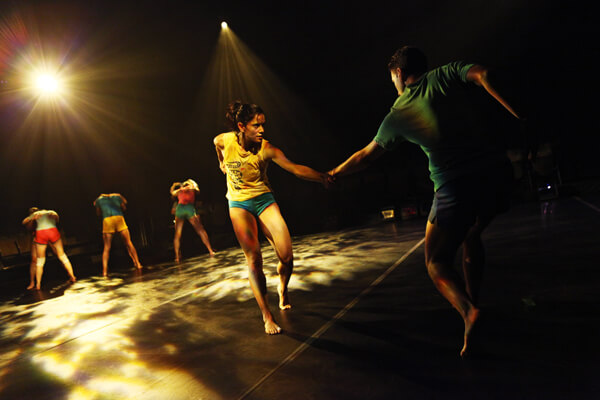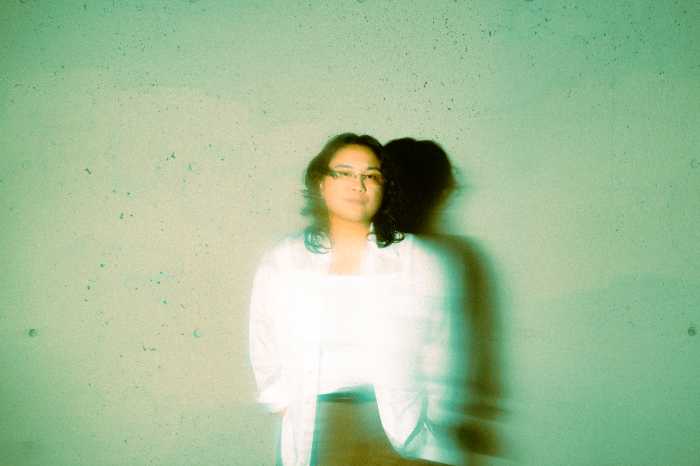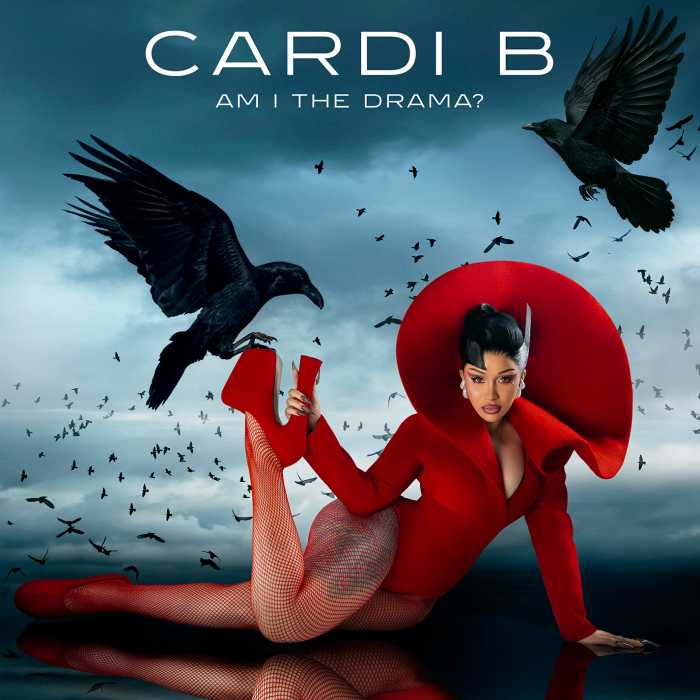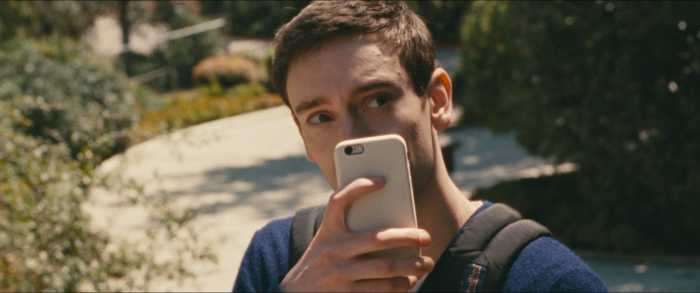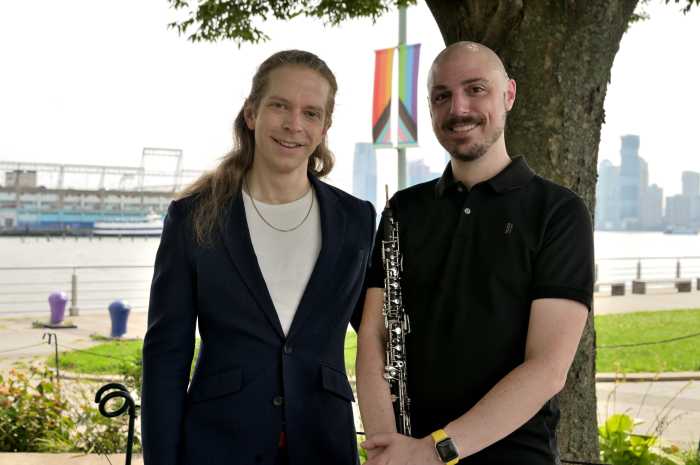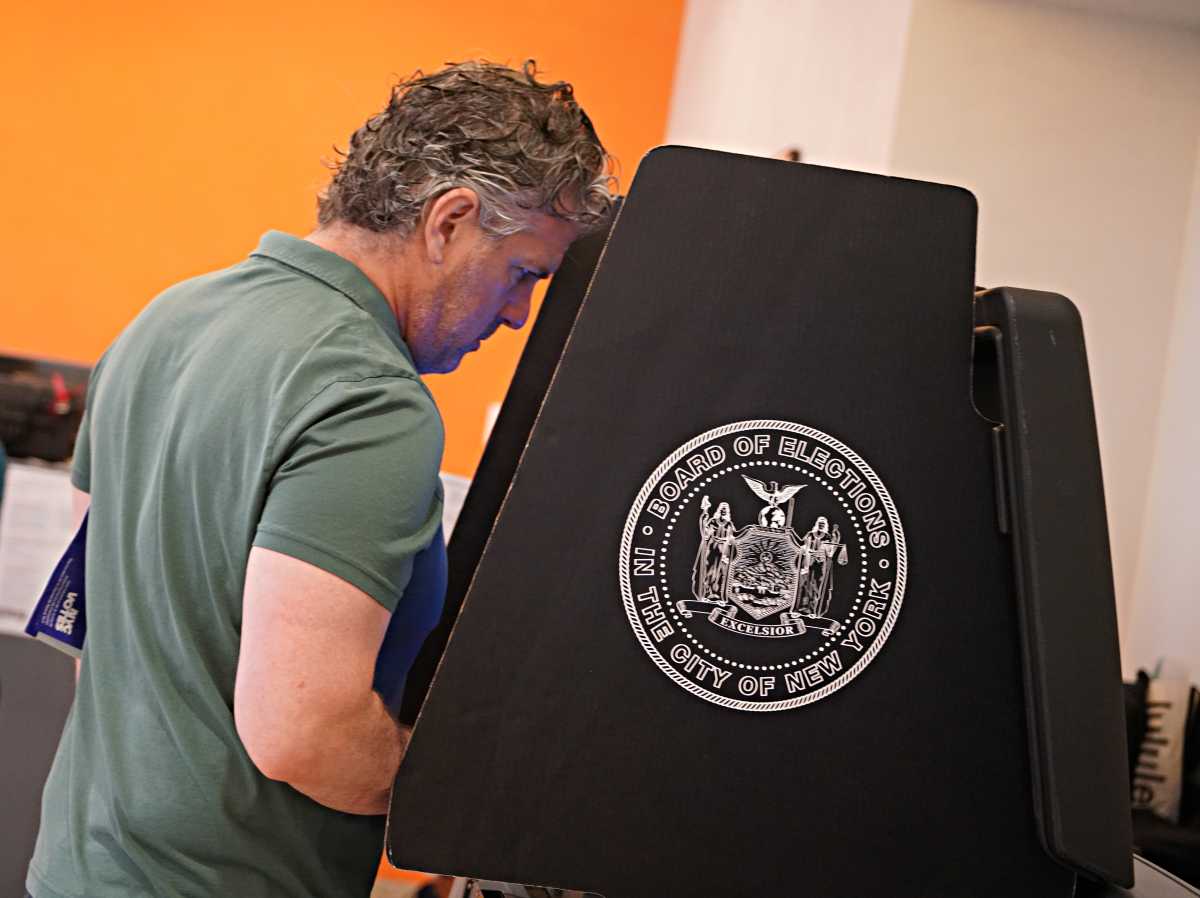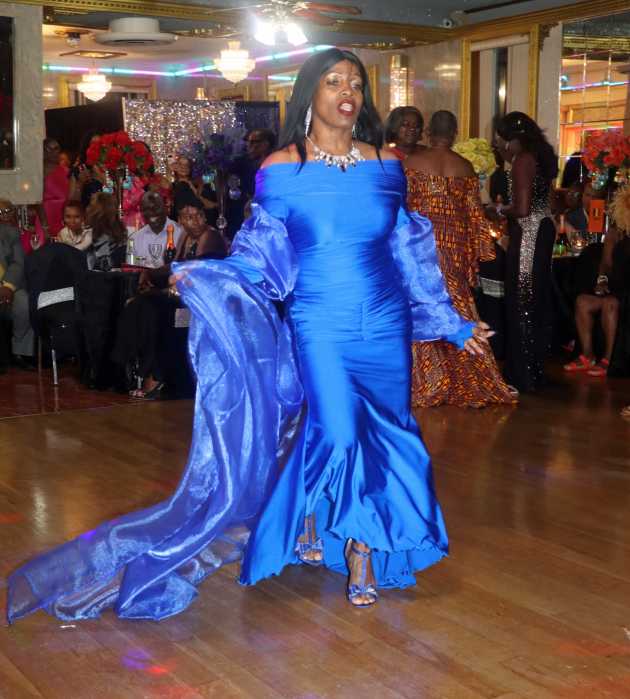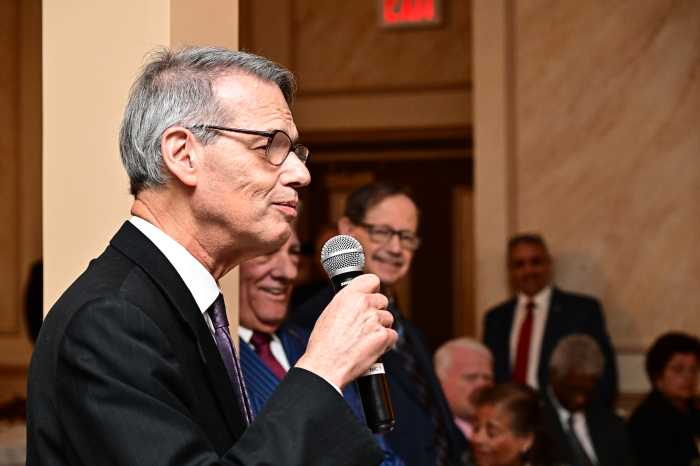Emily Gayeski, John Eirich, Ned Sturgis, DuÅ¡an Týnek, Sam Swanton, Tim Ward, Ann Chiaverini, and Alexandra Berger in “Stereopsis.” | JULIETA CERVANTES
Dušan Týnek is a young Czech-born choreographer whose eponymous Dance Theater, founded in 2003, has attracted goodly attention. In his three-dance evening at BAM Fisher (September 4-7), he shows a work from 2010 and two premieres. Týnek works in the modern dance tradition and his broad background of performing informs his style.
The theater, a spacious, flexible black box is set up with the audience on three sides. Týnek’s choreography is extremely rhythmical but, oddly, none of these three works use music. Still, all are clearly the work of the same man, one skilled at moving dancers through space, clever at twisting old steps to new purposes, and thorough in details of production.
“Base Pairs” (2010) uses the persistent pulse of a metronome and text by Cynthia Polutanovich, recorded by dancer/ choreographer Lucinda Childs. It’s hard to reconcile the emotional tenor of the words with the utter abstraction of the movement.
Four women and three men (Alexandra Berger, Ann Chiaverini, Emily Gayeski, Elisa Osborne, John Eirich, Sam Swanton, and Tim Ward) appear bare-legged in white leotards by Karen Young with fossils, skulls, vine tendrils, and fish, printed on them like tattoos by Ceri Isaac. The cast stands in formation, facing diagonally. Their windmilling arms yank them into different facings like game tokens on a board.
When they add lunges to the motif, taking them into space, the lighting (by Roderick Murray) shifts radically from one overhead source to another, altering the space. Týnek punctuates the rhythmic monotony with some surprising lifts. But it’s Murray’s lighting that articulates the move-per-beat dancing, which over the 15-minute duration of the dance starts to feel like a jackhammer to the brain.
Elisa Osborne and John Eirich (foreground) and Ann Chiaverini and Ned Sturgis, Tim Ward and Emily Gayeski, and Alexandra Berger and Sam Swanton, in “Romanesco Suite.” | JULIETA CERVANTES
The first premiere, “Romanesco Suite,” danced to a sound design by Dave Ruder and dressed by Týnek in sporty shorts and T-shirts, could be Part Two of the first dance, even down to Murray’s abrupt lighting changes and red shin buster lights that saturate the stage with color. Similar movements, like thrusting into a pushup and hopping on all fours, headstands, and cartwheels and little fast-foot patterns recall not only the work of two of Týnek’s mentors –– Childs and Merce Cunningham –– but also the movement in “Base Pairs.” And the unexpected entrance late in the piece of an eighth person (Eirich, joining the other six dancers from “Base Pairs” plus Ned Sturgis) is an homage, consciously or not, to Cunningham’s “Sounddance.”
An overused trope of Týnek’s typically repetitive movement style is walking increasingly faster around the periphery of the space before breaking into a jog, mostly counter-clockwise. Choreographically, running is filler for him –– like pirouettes in ballet –– that fills time without advancing the journey.
“Romanesco” highlights the emotionality of performance Týnek applies to his otherwise clean, abstractly designed movement, creating a dichotomy. We’re not sure if the brief connections –– a lift here, a lean there –– are meant to be more than kinetic moments in an unabated kinetic stream. Týnek keeps everyone busy, in a hurry to keep going, which serves to squeeze the breath out of the choreography.
The second premiere, “Stereopsis,” begins with Týnek himself reciting more of Polutanovich’s abstruse poetry. He’s miked, and the text is modulated from whispers to growls. Behind him are two giant lights, like monster’s eyes, glaring at us. The text perhaps refers to mythology –– Cyclops and the like –– but no matter.
Here, the men, again bare-legged –– not a complaint, as they all have beautiful bodies –– wear Young’s brown briefs with a kind of double necktie that connects to the waistband, front and back. The women wear purple tunics over their shorts.
The dancers provide their own sounds here, accenting phrases by shouting a percussive “Hah!,” clucking their tongues, or hissing. Couples skitter back-to-back, side-to-side, and front-to-front from the dimly lit rear, where they reside, into the lighted central arena where they engage. This time, Týnek elaborates on the running –– mostly clockwise for a change –– to include a two-step, hop, and small leap. It carries the dancers around and around, singly, in pairs, in opposing circles, and in canon.
Týnek knows how to make athletic, even exhilarating movement motifs, but doesn’t build them into the long, satisfying phrases that would transform them from exercises into expression. Like many young choreographers, he is still in the grip of his former masters but shows the sparks of a personal voice that’s eager to emerge.

